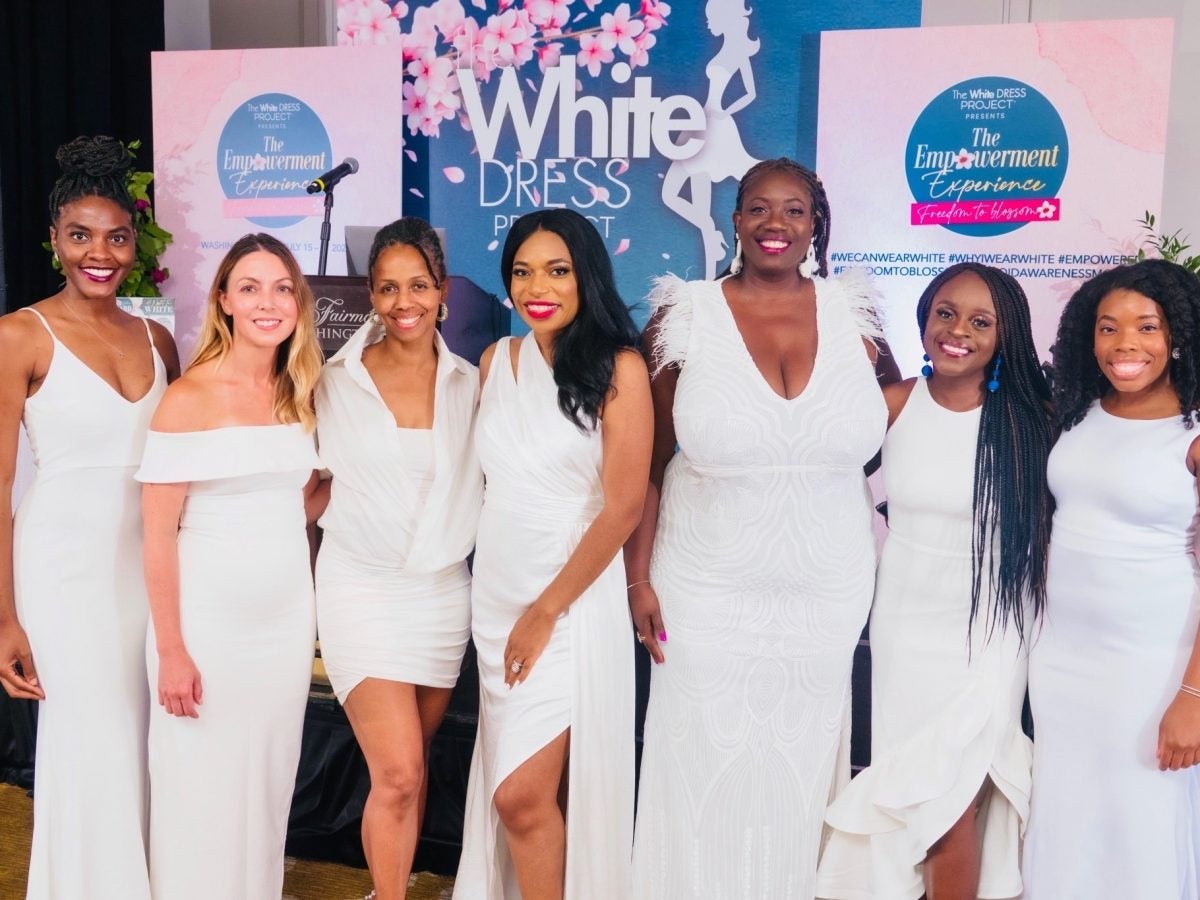
Ever since she was a teenager, journalist, educator and non-profit founder Tanika Gray Valbrun suffered with fibroids. You’ve heard it before: Her periods consisted of heavy bleeding, she dealt with uncomfortable pain, experienced bloating, and the emotional toll on her was significant. Before Valbrun’s ordeal, her mother dealt with the same condition. She was fed up — not only with dealing with the discomfort of fibroids, and of watching women in her life deal with it quietly, but also with constantly being concerned that the ugly side effects of these growths would rear their ugly head.
“After my first myomectomy, I realized that I had no white clothing in my closet,” she tells ESSENCE. “It dawned on me that I had sacrificed my quality of life for years because of the fear I had living with fibroids. I never had any white clothing, light colored house items, no cloth car seats — nothing that I could potentially stain. In that moment, I knew that I wanted to create a community because I knew I was not the only one whose quality of life had been impacted.”
But there are many Black women out there who don’t know they have fibroids. They may have heard about them, but the journey to actually being diagnosed can be involved as it’s not a condition one can easily spot. It often requires advocating for yourself, having your gynecologist feel for irregularities with your uterus, and then ordering testing, like an ultrasound or MRI, to detect their possible presence. And signs that one may be dealing with them may not be obvious to some unless symptoms of one’s menstrual cycle become unbearable or infertility occurs. This lack of awareness also motivated Valbrun to get to work.
“I knew that I did not want anyone to continue to suffer in silence with fibroids, or not have adequate access to healthcare or information about them,” she says. So Valbrun, who herself had 27 fibroids removed in just her first myomectomy procedure, created The White Dress Project. It’s an Atlanta-based, women-led organization where those dealing with fibroids can share their stories and raise awareness about the prevalence of the growths. She started it in 2014, and the platform has had a major impact in its nearly 10 years of work.
“In collaboration with healthcare professionals, policymakers, and advocacy groups, The White Dress Project has grown to become a beacon of hope, support, and advocacy for women affected by uterine fibroids,” she says. “It humanizes the issue and empowers women to come forward and share their own journeys.
She continues, “The White Dress Project serves as a platform for fostering a community where women can find understanding, solidarity, and strength as they navigate the challenges of uterine fibroids.”

It’s also done major work to influence change. Valbrun and The White Dress Project helped to author Uterine Fibroid Awareness Month (which is in July) legislation with Congresswoman Yvette Clarke of New York and other fibroid awareness advocates. It’s the Stephanie Tubbs Jones Uterine Fibroid Research and Education Act of 2021. It’s named after the late Congresswoman of Ohio who championed women’s health issues.
“Historically, there has been a lack of adequate research and attention given to this prevalent health issue. The legislation aimed to rectify this by urging the allocation of resources to advance scientific knowledge surrounding fibroids,” says Valbrun. “By supporting research initiatives and educational campaigns, the legislation seeks to foster innovation in treatment modalities, leading to improved patient care and better outcomes for those affected by uterine fibroids.”
The White Dress Project has also expanded into events. The organization recently hosted its annual EmPOWERment Experience in Washington D.C. from July 14-16. It brought together people from all walks of life, including women, men, advocates, policymakers and healthcare professionals, to center the conversation on uterine fibroids and its impact. There were educational sessions, wellness sessions, testimonials and more, allowing for the mission of this community to be seen through, which is to make sure patient stories are heard.
“We are a board made up of women who are managing life with fibroids, and we believe that the data lies in the stories of individuals who are living with and have had experience with fibroids,” she shares. “Placing patient stories at the center of the White Dress Project is critical because it humanizes this public health issue, empowers both patients and others in similar situations, raises awareness, reduces stigma, drives advocacy and policy change, improves healthcare practices, and inspires research and innovation.”
There certainly is power in speaking up and telling your story. There is also great power in educating one’s self. As 80 percent of Black women are found to develop fibroids in their lifetime, and are reported to develop them earlier than their white counterparts, it’s time for us to make sure we’re informed about fibroids, options for treatment and how to both manage and move forward from them.
“Many Black women discover they have fibroids later in life, often after enduring years of heavy bleeding, painful menstrual cycles, fertility struggles, and other related issues. We must stop normalizing symptoms that we often contribute to ‘being a woman,'” says Valbrun. “Prioritizing awareness and education about fibroids in the Black community is a critical step in breaking down barriers to proper care, advocating for equitable access to healthcare resources, and ultimately improving the well-being of Black women everywhere.”
